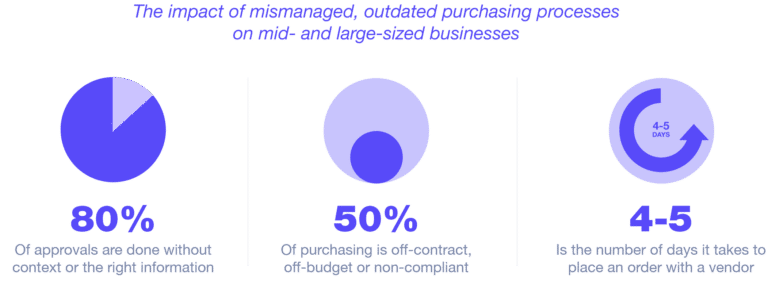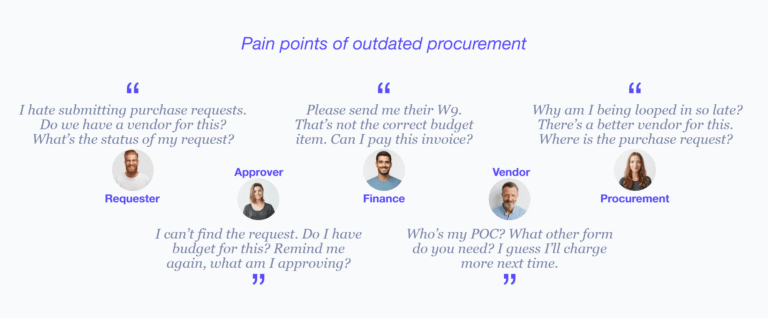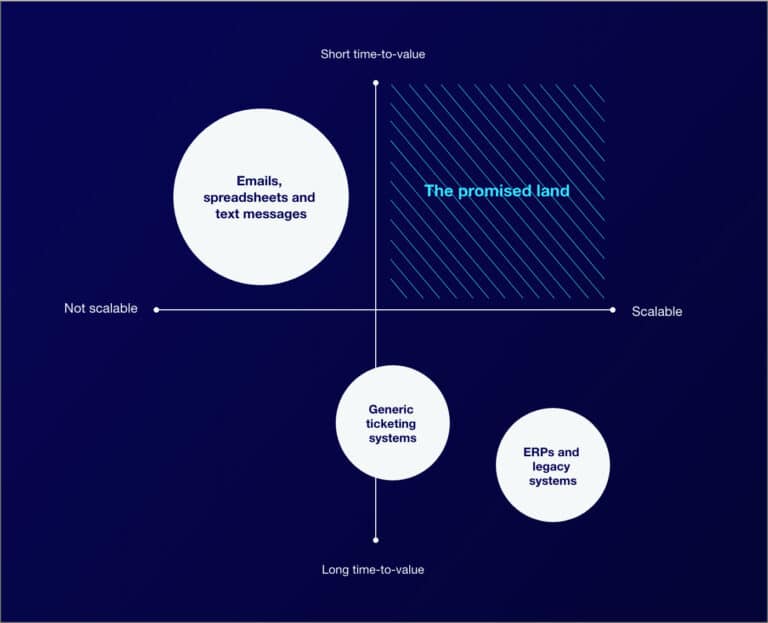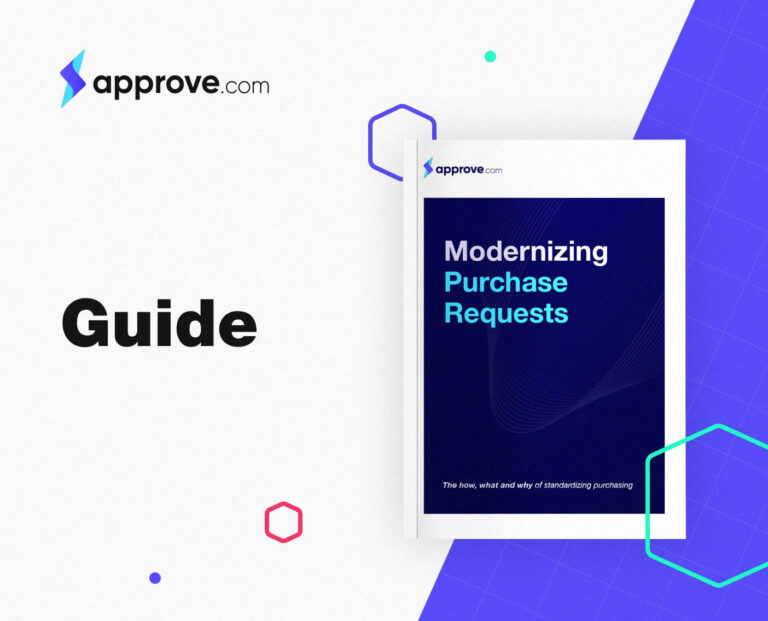The How, What, and Why of Standardizing Purchasing
In the early days of a business, requisitions are a rather straightforward operation. It can be sufficiently overseen by a single finance or operations manager, especially considering the limited number of purchase requests and vendors there are to manage. This isn’t the case in larger organizations.
As organizations grow, there naturally become more purchases and vendors to manage. Procurement and finance managers have greater responsibility, overseeing the purchasing activities and partnerships needed to fulfill various business needs across departments and teams.
Despite this, businesses often overlook the need top optimize purchasing processes, opting instead to introduce new technologies on the payments side of things. The result is that procurement and finance are left using generic, outdated tools for managing complex requisition processes. This hurts the overall procurement operation, which becomes increasingly fragmented, siloed and inefficient. Properly managing procurement in this environment is difficult, and the business’s financial health takes a major hit.
Because procurement is a key strategic function that, alongside finance, determines whether or not a business is operating profitably, larger businesses are awakening to the urgent need for transforming and modernizing the way they handle requisitions.

Based on information provided by 120 finance and procurement managers.
The Problem: Fragmented and Siloed Operations
Procurement processes rely on information. Traditionally, this information resides in emails, spreadsheets, and Slack messages, on ERPs and budgeting and payment systems. As such, it can only be accessed by a limited number of people.
Beyond making requisition processes virtually impossible to track (and therefore manage effectively), this scenario creates a serious visibility issue. When this issue is left unaddressed, stakeholders need to jump through hoops to get information they need, processing times grow, and spending activities get out of control.
Another result of the visibility issue is that it leaves requesters in the dark, not knowing where or with whom their purchase request currently stands, or when they should expect an approval. Approvers, meanwhile, lack the underlying context in which the request originated. They have no way to properly assess the request in order to make an informed decision. Procurement operations then become bottlenecked when these stakeholders are forced to independently track down information that resides in a number of different places, with a number of different gatekeepers.
Missing budget data is another issue that stems from siloed requisition processes. Without visible, updated budget information, approvals are made regardless of where the relevant department’s budget stands. Down the line, payment requests reach finance without the finance team knowing whether or not the goods or services they’ve been asked to pay for have been delivered. In order to find out, they too must independently track down information from various stakeholders.
Vendors that take a part in the procurement process also suffer. When vendor information is not properly managed, updating information like addresses, contact or billing details is a mess. Any minor mistake can delay payment, which hurts the relationship between the business and the vendor.
With this fragmented process, procurement turns into a tactical operation—one that’s little more than an element involved in moving purchasing information between stakeholders.
But when procurement gets optimized, and more efficient collaboration becomes possible, it turns into an important strategic function that drives cost savings and operational advantages for the business.
Outdated procurement—in which information resides within systems, folders and documents that don’t communicate and may only be accessed by a specific few—makes efficient collaboration impossible.
For procurement overall to be more effective, the stakeholders involved in requisition processes must be able to collaborate in such a way that all of the information surrounding any request or approval is easily captured, centralized, and accessible by anyone who needs it.

Why Non Purpose-Built Solutions Fail
Relying on emails and spreadsheets for procurement works for early-stage businesses. These applications offer the easiest way for these young businesses to manage procurement on-the-go.
Ticketing software is often adopted by companies whose spend operations are growing more complex. These solutions seem like a good option for managing a variety of tasks, but in reality they require months or years of customization, and rarely suffice in addressing comprehensive process management needs.
For large businesses, the next seemingly natural step when it comes to procurement automation involves their ERP. After all, an ERP is a major investment, so extending its capabilities to address procurement needs seems logical.
While this approach would make sense theoretically, in reality, ERPs are not designed to address the specific needs of procurement. ERPs typically offer an unfriendly user experience that slows adoption or blocks it altogether. Some ERPs offer modules designed to address procurement specifically. But these modules force procurement professionals into rigid workflows that can’t be customized. These workflows—which involve various players both within and outside of the organization—are at the core of the procurement operation. Without the ability to customize them, procurement professionals are better off resorting to their outdated, more manual approach.

Requisition: The Place to Start
Businesses that are ready to make the transition to more efficient, automated purchasing should begin with requisition. By making sure the initial stage of your procurement process is done right, you can generate a positive impact on your company’s spend.
Here are three more reasons why requisition is the place to start with:
It’s where most of the manual work is happening
Requisition consists of a lot of moving parts. It involves the largest number of stakeholders, from the employee who initiates the request, through to the budget owners who review the request, and on to the legal and finance teams that verify compliance and the procurement team that manages the entire process. Collecting information from each of these stakeholders, who communicate in separate threads and platforms, is cumbersome and time-consuming. By embracing automation, overhead and processing times are reduced thanks to automated forms and approval flows. Outdated manual processes are replaced with more efficient, digitized ones that align with the formal procedures you already have in place.
It’s where you can get the most critical data
Requisition processes involve a lot of data that’s important for businesses to collect. When approvers, budget owners, and professional teams are making spend-related decisions, having the right context and data is crucial. This includes data relating to the request that can later populate the PO (including a description of the need, and information on the cost, timing, terms, vendor, budget, etc.), as well as operational data such as requester activity, vendor relationship history, processing times, budget usage, leading spend categories and more.
Through automation, all of this data can be captured digitally, in turn providing visibility for every stakeholder involved in the process. This enables stakeholders to track who is creating and approving requests, and where approval flows currently stand. It makes monitoring the performance and spending activities of different departments easier and more accurate, thereby driving better, data-driven decision making.
It’s where you have the most influence
For businesses to spend wisely, it’s critical for procurement teams to be involved at the earliest stages of the procurement process, including requirement definition, supplier discovery and selection, and negotiations. Their ability to make an impact after a request is approved and processed is significantly lower.
Deploying automation for requisition ensures that the procurement team is notified early on and has access to all of the data and information they need to maximize cost savings and operational efficiency. This healthier, early-stage collaboration is promoted by automation tools that are easy for business users to adopt, and that eliminates the friction they often encounter with outdated, manual processes.
3 Things to Look for in a Requisition Management Solution
As you start to explore requisition management solutions to standardize your purchasing process, keep these three essential components in mind:
User experience
There is no point in deploying a solution that users won’t want to use. Indeed, one of the main obstacles to a successful digital transformation is an unfriendly user interface that prohibits easy and fast adoption. Ensure that your requisitions solution offers a top-notch user interface. Otherwise, your users will quickly reject it and revert to old ways of working.
Flexibility
Purchasing involves countless processes with different flows, stakeholders and supporting information. With this, it’s essential for procurement professionals to have flexibility in the way they automate their operations. An automation solution that forces procurement into rigid, pre-defined flows that don’t inherently align with their processes is a waste of time.
Integrations
Modernizing the way you manage requisitions doesn’t (and shouldn’t) mean abandoning the systems you already have in place. Look for a solution that syncs with your existing finance systems, and enables the automatic updating of financial records according to information generated from automated procurement processes.
Don’t Stay Behind, Modernize Requisitions Now
With the global pandemic impacting every business across the globe, it has perhaps never been so pressing for businesses to do away with outdated procurement processes that are hurting their bottom line. By introducing a modern solution into everyday purchasing operations, businesses can quickly achieve efficiencies and cost savings that support their strategic goals. Modernizing purchasing operations results in better use of employee time, easier and more efficient collaboration between the procurement team and stakeholders company-wide, and the elimination of unbudgeted and unapproved spending. It also enables procurement teams to automate manual, repetitive tasks and free themselves to focus on strategic, high impact initiatives.

